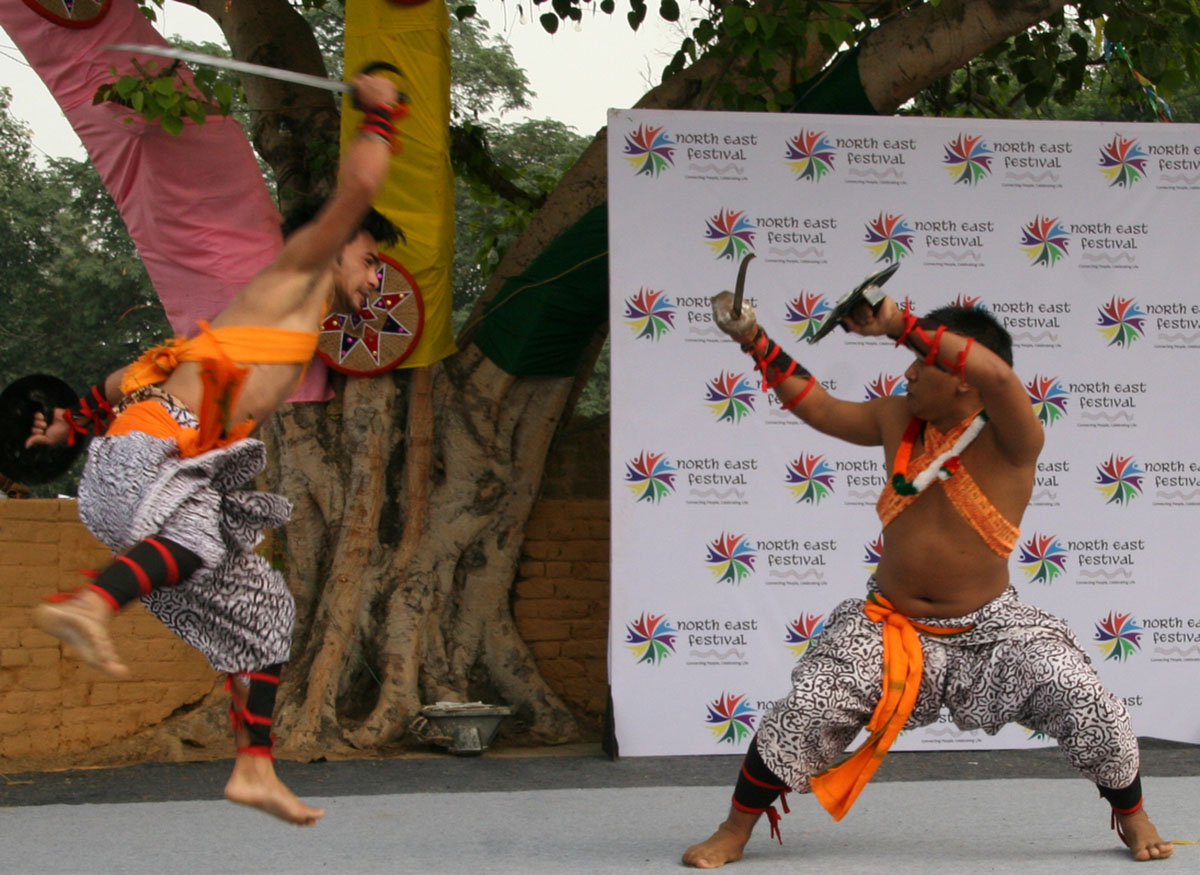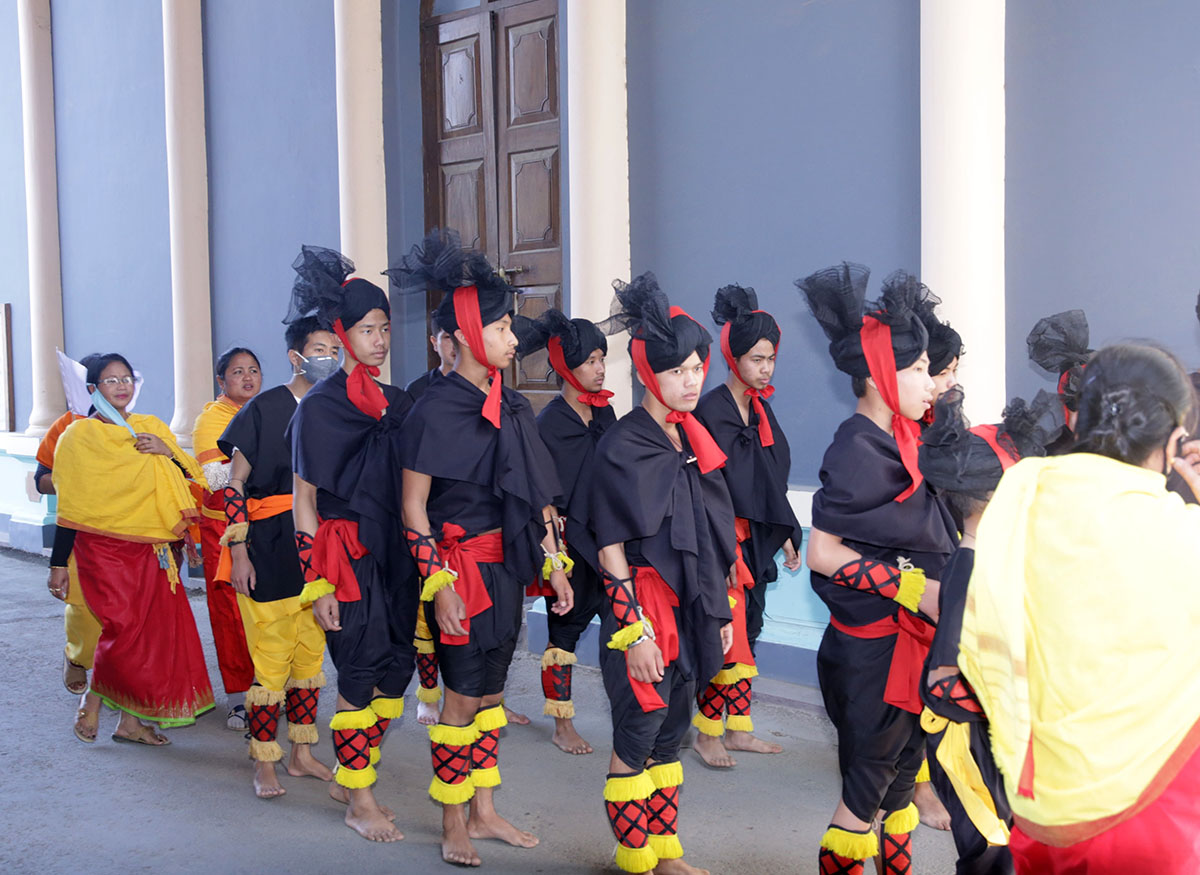ARTICLE
Thang-Ta
Originating among the Meitei people of Manipur, thang-ta is one component of the martial art form known as Huyen Langlon, often referred to interchangeably. It is an armed martial art technique that mainly uses swords, called thang, and spears, known as ta. The other unarmed component of Huyen Langlon is known as sarit-sarak. According to local legends, the art form originated from the creator of the Meitei people, Tin Sidaba, and the instruments originated from his limbs. It was banned by the British during the Anglo-Manipur War (1891) but was reintroduced by Maharaja Churachand in 1934.
The practice of thang-ta may be carried out in various ways. One component to this art form involves performing rituals, another involves elements of dance using swords and spears and a combative form involves the actual act of fighting. Thang-ta also involves forms of war dance such as the sword dance, Thangkairol and the spear dance, Khosarol.
Within the method of fighting, the spear techniques are known to be harder than the sword techniques. The most basic stance is known as the “lion’s posture” which involves standing with one’s feet at a forty-five-degree angle, leaning forward with the toes and chin in a straight line, thus, forming a straight line at the back. Rather than a fight to death, the duel is often won by the opponent who draws the first blood.
Today, the martial art form is taught in some schools in Manipur and Jammu and Kashmir. Until 1985, the knowledge of thang-ta was not shared with non-Meitei people. Ojha Premkumar is considered the current grandmaster of thang-ta while Khilton Nongmaithem was the first teacher to teach thang-ta outside Manipur. Among many different forms of performing Thang-ta a popular variant is performed with spears during funerals and Manipuri classical dances such as Pung and Pala Cholom and the Lai Haraoba are also believed to have originated from this martial art form.
Bibliography
Our website is currently undergoing maintenance and re-design, due to which we have had to take down some of our bibliographies. While these will be re-published shortly, you can request references for specific articles by writing to hellomapacademy@map-india.org.








